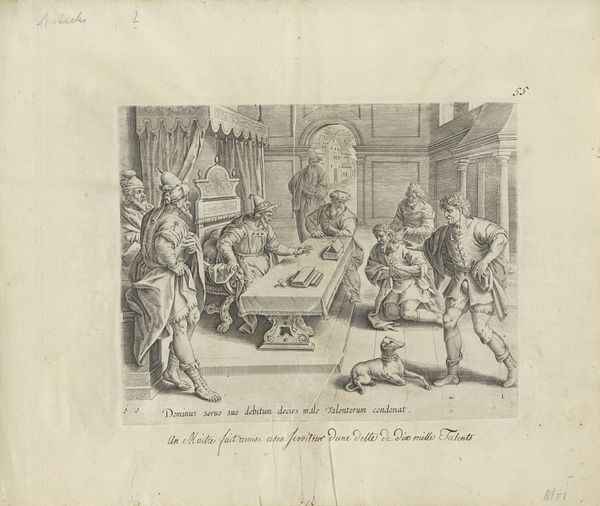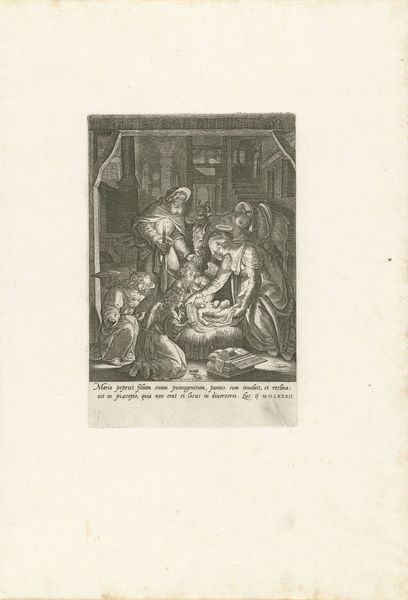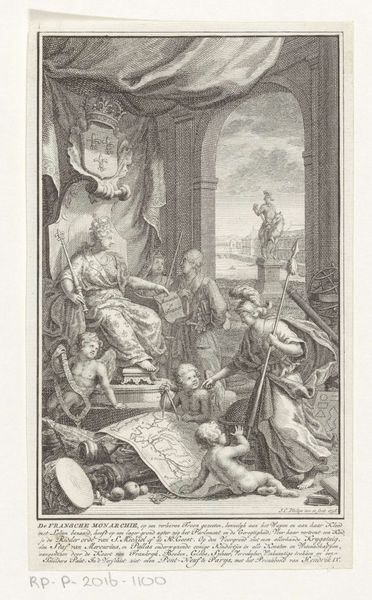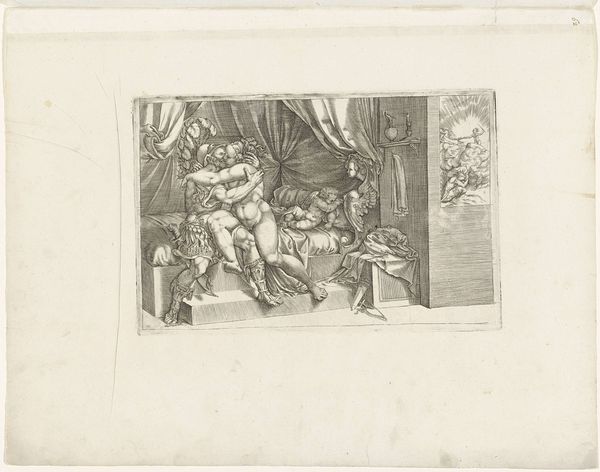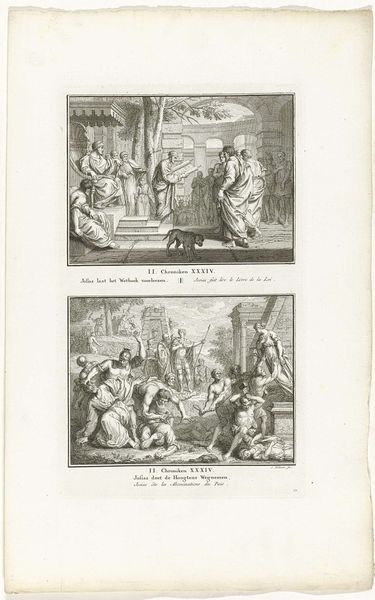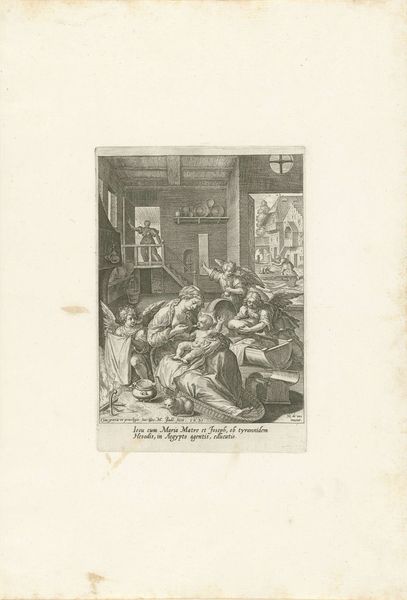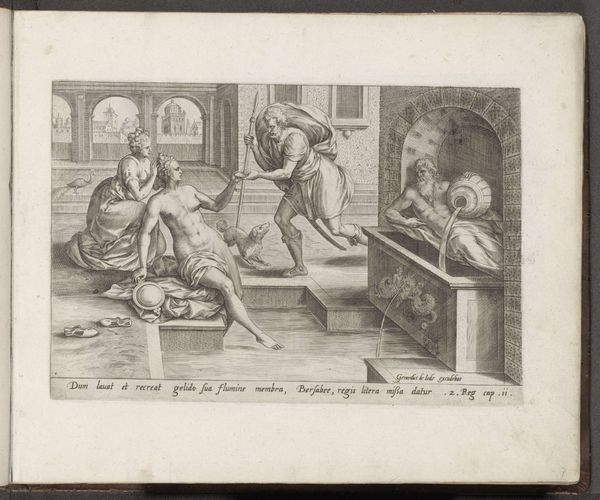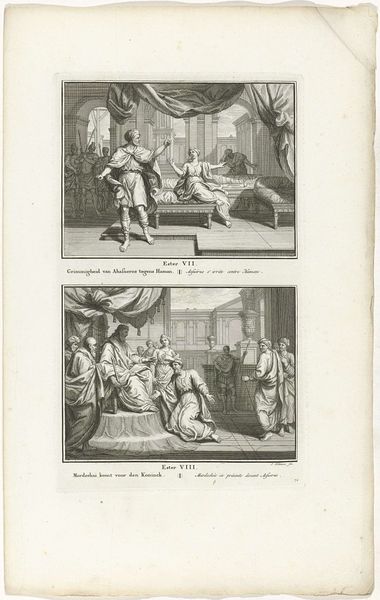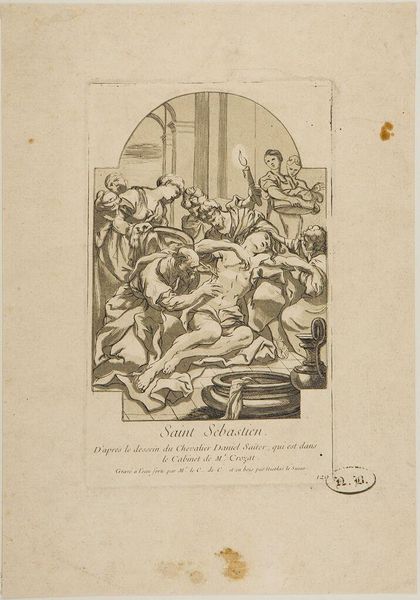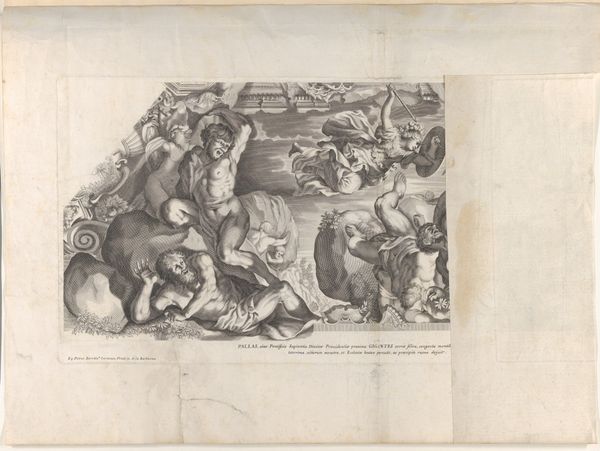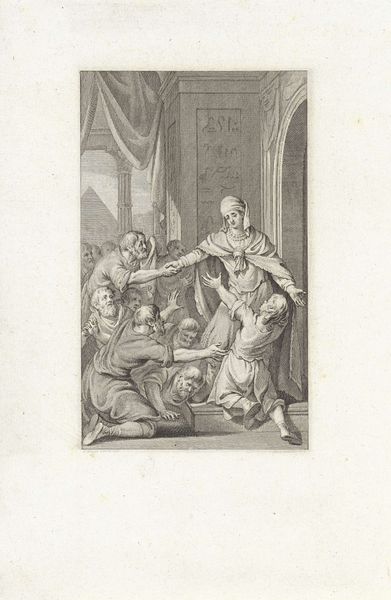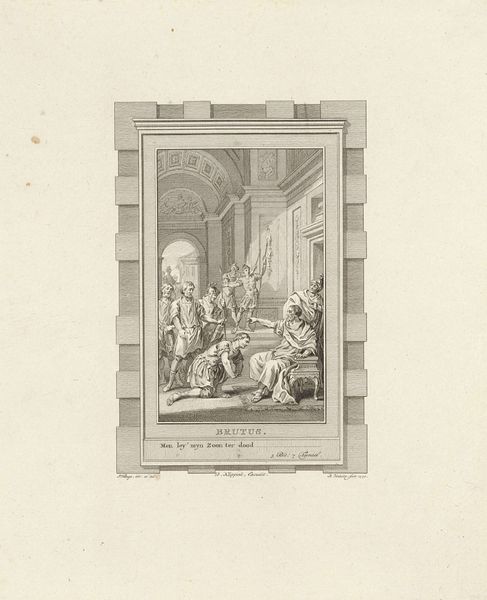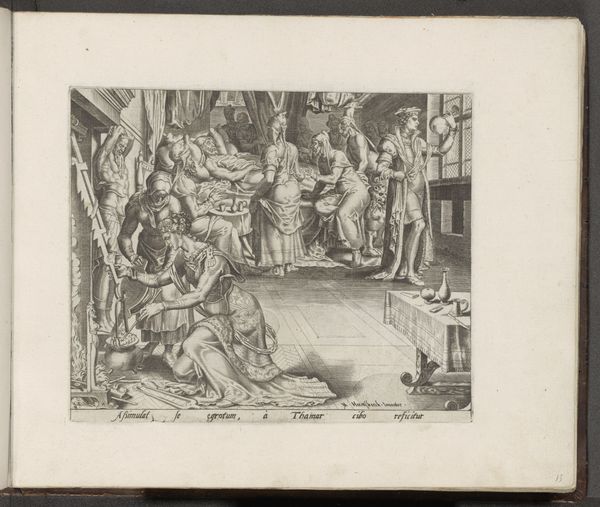
print, engraving
#
baroque
# print
#
figuration
#
history-painting
#
engraving
Dimensions: height 231 mm, width 260 mm
Copyright: Rijks Museum: Open Domain
Curator: This engraving, attributed to Francesco Faraone Aquila and created sometime between 1686 and 1740, is titled "Pest." It presents a scene I find simultaneously unsettling and fascinating. Editor: Oh, immediately what strikes me is how it captures a very specific feeling—suffocation. Not just physically, but this weighty atmosphere of despair, almost like a collective trauma frozen in ink. Curator: Absolutely. You've put it beautifully. Note how Aquila uses the medium itself—the precise, controlled lines of the engraving—to create this sense of… well, constriction. It feels incredibly deliberate. You see the prostrate figures in the foreground, almost sculptural in their stillness. Editor: Right, there’s almost a tableau vivant aspect to it. Are they mourning? Praying? There's also the tension between the classical references and the palpable horror—the bust in the background juxtaposed with what looks like people succumbing to plague. The artist, it seems, is pointing to the frailty of systems and the vulnerability of the body. Curator: The details are really impactful—the person fumigating with the torch, the huddled figures. Are they seeking divine intervention or just desperately trying to ward off infection? Also the animals are dead, or sick... Editor: Which begs the question, whose narrative is prioritized? This looks like an attempt to maybe showcase power, through a religious figure. Perhaps a narrative aiming for future glorification despite the presence of decay and systemic collapse. It speaks to enduring tensions surrounding authority, illness, and socio-economic factors in shaping societal responses. Curator: An excellent point. The inscription definitely alludes to papal patronage. One can easily become preoccupied by the spectacle of suffering, but looking at it through this light… It opens up other meanings and implications. What do you think about its continuing impact now, looking at these historical pandemics reflected? Editor: Absolutely—"Pest," even now, asks critical questions. How do we represent collective trauma, who gets to speak for the suffering, and how does art both reflect and shape our understanding of these catastrophic moments? Also: it encourages a reflection on art's capacity to act as social commentary. It's an invitation to learn about inequities while urging conversations across historical, political, and social lines. Curator: Very well said! Yes, I see it as less a depiction of a single event and more of a testament of shared humanity and reflection of current experiences.
Comments
No comments
Be the first to comment and join the conversation on the ultimate creative platform.
